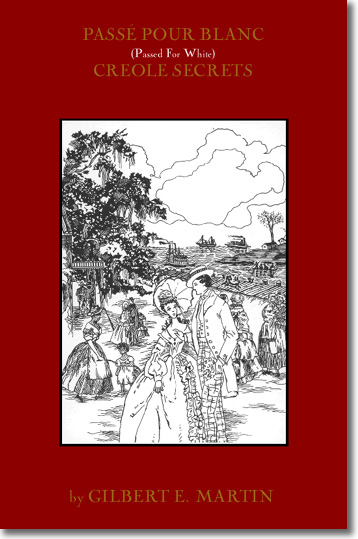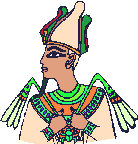|
| |
|
| |
The Creole
Our Early African Origins
|
|
|
|
|
| |
Our Mixed Race Heritage and it's Egyptian , West African and Moorish Roots
It is well documented that a Great majority of the Ethnic and Culturally identifiable Creole People
are of Mixed Race and their Genes certainly can attest to it ...Through the Centuries this mix has come about by the mixing of the Black and White Races ..Within the Last four hundred or so Years You can say that the major Groups have been the European Caucasians and the West African sub Sahara Groups,.but none the less no one can deny that Many Creole ethnics are indeed a mixed Race..
Prior to the introduction of the Creole to the new World there was Racial Mixing on the African Continent..Even though the Word Mulatto derives from the Spanish it should be noted that Race mixing has been going on since the dawn of time...
Recorded History began with the Nubian Race and from them sprang the Egyptian Dynasty..The age old question of Just what Race were the Egyptians still goes unanswered till this day..The answer obviously is that they are neither Black nor White but rather a Mixture of both Black and White ...Since Ancient People were not as Race conscience as People are today it was never a issue of debate...The Closest the World can come to defining the Egyptian and North African People is that they were of Mixed Race ...Creoles are also of Mixed Race...as well as Black and White ..
Though Our Cultures differ, which is understandable since over 2000 years have elapsed, We as a People are Closer to the Ancient Egyptians ethnically and Racially than anyone from the human Race
..For this reason and many ,many more We can legitimately subscribe to the Racial theory that Our Creole Roots go back to antiquity...For this We can Rightfully Claim a Link to Ancient Egypt, North Africa and the Sub Sahara, Racially, Anthropologically, Culturally and Genetically..No one else can Claim such a direct connection to the North Africans and Egyptians of Antiquity
Afrocentrism and Ancient Egypt
Several Afrocentrists have claimed that important cultural characteristics of ancient Egypt were indigenous to Africa and that these features were present in other early African civilizations[38] such as the Kerma and the Meroitic civilizations of Nubia.[39] Scholars who have held this view include Marcus Garvey, George James, Cheikh Anta Diop, Martin Bernal, Ivan van Sertima, John Henrik Clarke, Chancellor Williams, Molefi Kete Asante and Yaacov Shavit. In Black Athena Revisited (1996), a collection of essays edited by Mary Lefkowitz, Professor Emerita of Classical Studies at Wellesley College in Massachusetts, and her colleague Guy MacLean Rogers, a number of Afrocentric claims are examined and criticised.[40]
During the Dynastic period, which runs from 3150 B.C. to 30 B.C. there were several major migrations into and out of Egypt that had significant impacts on the Egyptian population. Libyans, Asiatics, Nubians, Assyrians, Persians and Greeks at various times conquered Egypt, and their people intermingled with the resident population.
A number of DNA studies on modern Egyptians indicate that there has been significant gene in-flow from both sub-Saharan Africa and Asia. For much of the Dynastic period Egyptian kings ruled Nubia, but in the 8th Century BC Nubian kings conquered most of Egypt and ruled it for almost a hundred years as the Twenty-fifth Dynasty of Egypt. [41] Several studies involving human remains have concluded that Egypt has been a heterogeneous population from pre-dynastic times, consisting of both Negroid and non-Negroid populations.
There are a number of surviving copies of a sacred text from Dynastic times called the Book of Gates. These were usually carved and/or painted inside tombs, for the guidance of the soul of the deceased. These inscriptions clearly show that the Ancient Egyptians themselves were conscious of ethnicity, and that they saw fit to distinguish their race from the other races they knew - including the Nubians to the south of Egypt. In the chapter dealing with the Fifth Division of the Tuat, the work notes four different groups of men[42][43][44] (translation by E.A. Wallis Budge):
The first are RETH, the second are AAMU, the third are NEHESU, and the fourth are THEMEHU. The RETH are Egyptians, the AAMU are dwellers in the deserts to the east and north-east of Egypt, the NEHESU are the black races, and the THEMEHU are the fair-skinned Libyans.
Human evolution
Evolutionary psychologist Geoffrey Miller states about Afrocentrism:
The First Slaves, The First Free People of Color and the First People of African Descent to inhabit the New World.... The New World's Oldest Non-Native American indigenous Inhabitants
|
| |
|
|
Notice the different Racial tones |
The People are Black Brown and White |
A controversy over the skin color and ethnic origins of the ancient Egyptians was sparked as part of the Afrocentric debate.[101] Afrocentrist scholars such as Cheikh Anta Diop contend that ancient Egypt was primarily a "black civilization". One source cited in support of their argument is Herodotus, who wrote around 450 B.C. that "Colchians, Ethiopians and Egyptians have thick lips, broad nose, woolly hair and they are burnt of skin."[102]
However, Classical scholar Frank Snowden, Jr. cautions against the reliance on accounts by ancient writers to describe the physical characteristics of other ancient peoples, as they held different connotations from those of modern-day terminology in the West. He also points out that other ancient writers clearly distinguished between Egyptians and Ethiopians.[103]
Keita and Boyce confront this issue in a 1996 article entitled, "The Geographical Origins and Population Relationships of Early Ancient Egyptians". As anthropologists, they point out the danger in relying on ancient interpretation to reveal for us the biological make up of a population. In any case they contend, the relevant data indicates greater similarity between Egyptians and Ethiopians than the former group with the Ancient Greeks.[104]
Ancient Egyptians are often portrayed in modern media as Caucasians, and many people, Afrocentrists in particular, have been critical of this.[105] According to Egyptologists, ancient Egypt was a multicultural society of Middle Eastern, Northeast African, and Saharan influences.[101][106] Anthropological and archaeological evidence shows that an Africoid element was evident in ancient Egypt,[107] which was predominant in Abydos in the First dynasty of Egypt.[108][109]
New Orleans's freemen of color.....: a forgotten generation of cabinetmakers rediscovered... Click here
|
Passé Pour Blanc
by Glbert Martin
while reading Passé Pour Blanc, bear two things in mind. (1) Creoles were forced to become the chameleons of humanity long before Louisiana became a part of the United States; even before the United States were united. (2) Those decisions pertaining to whether one should or should not pass for white are not to be considered fantastic. They occur quite frequently in the Creole community, and will continue to be prevalent as long as American racism persists. Furthermore, when Creoles refer to a person or family who lives or works as white, the term used is "Passé Blanc," and not "Passé Pour Blanc."
Passé Pour Blanc
(Passed For white)
is a unique story depicting the ongoing struggles and frustrations of a unique people - the Creoles of Louisiana. Although this story and it's characters are fictitious, they are based upon reality, and typifies more than two hundred years that this group had to endure such struggles and frustrations. |
 Passé Pour Blanc Passé Pour Blanc
by Glbert Martin
|
About the Book
Passé Pour Blanc is a provocative, exciting, and tragic story. It vividly depicts the ongoing struggle and frustrations of a very unique nation - the French Creoles of Louisiana. Although this story and its characters are fictitious, they are based upon reality, and a lifetime of obsservations and experience. Also, through this most powerful and commanding story, one can get a better understanding about the mysteries surrounding this nation which has been severely abused by the domination of American racism.
The term nation is used in this description for three reasons. First, contrary to popular belief, not all people designated as "colored" were brought to North America on slave ships and in chains.
Thousands of the ancestors of Louisiana French Creoles emigrated as refugees from the war torn French colonies (Haiti for the most part) in the West Indies. Secondly, those ancestors were educated, wealthy and self-sufficient long before Louisiana became a part of the United Stataes. Therefore, the United Stataes had absolutely nothing to do with their social status. And thirdly, the guarantees stipulated in the Louisiana Purchase Treaty set this community apart from all others - into a category all its own. Now, it can readily be seen that Passé Pour Blanc has a mission to accomplish.
Since the contents of Passé Pour Blancreveal actions and occurences common only to the Creole community, and those actions and occurences are expected to distinguish Louisiana French Creoles from all other nations in America, the readers are challenged to try to appply them to any other group. IfPassé Pour Blanccan be applied as being common to any other ethnic group, then its main purpose has not been served.
If it cannot be thusly applied, then this book, although fictionalized, shall take its place among the tremendous amount of evidence, already gathered, which points toward recognized nationhood for Louisiana French Creoles. This author firmly believes that Louisian French Creoles, especially those in and from New Orleans who have been frequenting both sides of the color line for centuries, have no real counterparts. No cultural equivalents
Footnote..
.Although the Author has passed away his Ideas were ahead of his Time and Hopefully they will not be forgotten..It will come a day whene someone will continue to challange the American Government on The persuit of Our Creole Rights
|
| |
|
|
 |
 |
| | |
|

